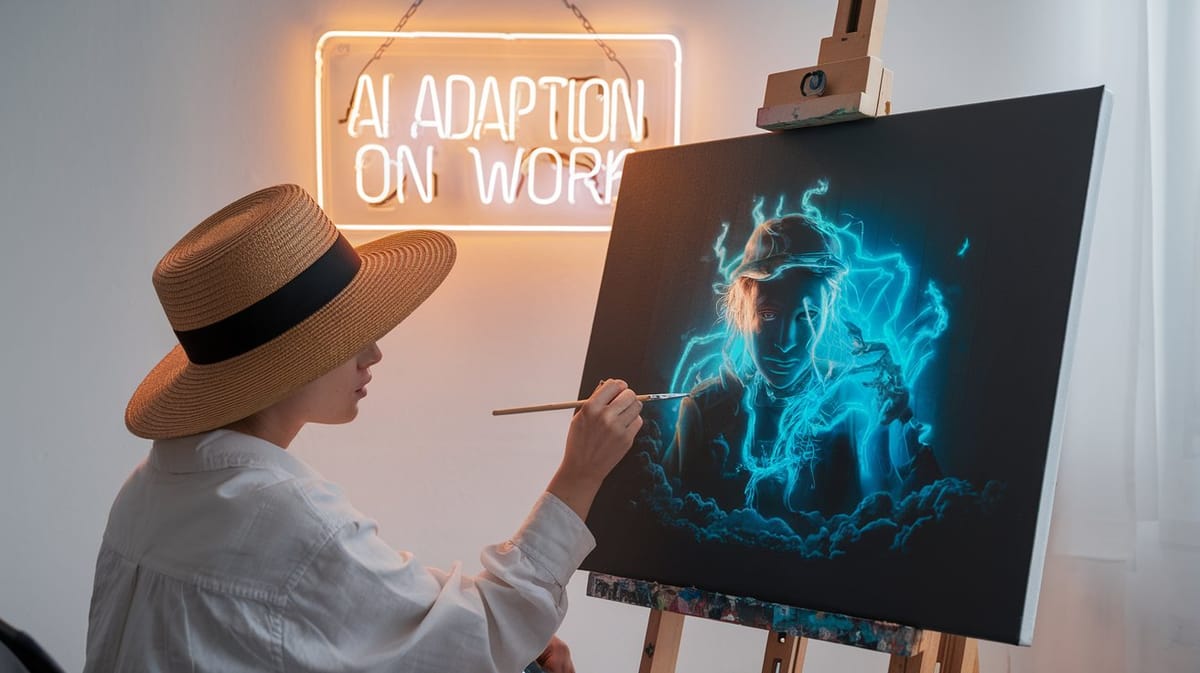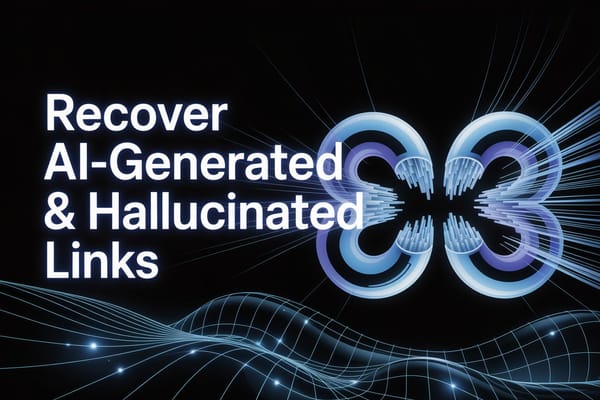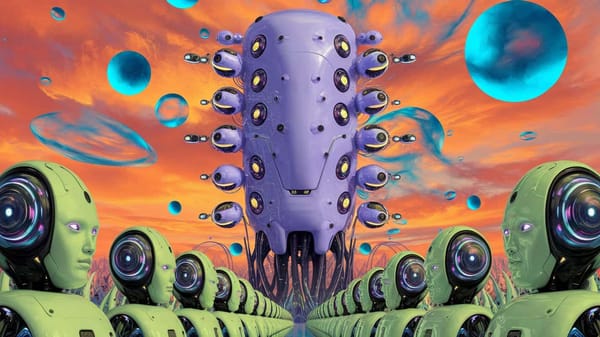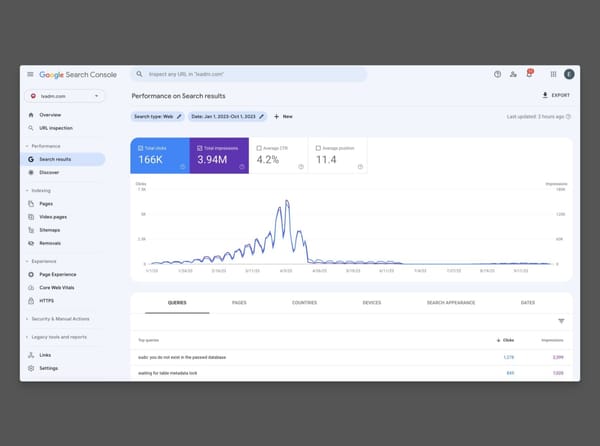Embracing AI in the workplace has become crucial. It's not merely about following tech trends, but revolutionizing our approach to work. This newsletter delves into AI's significant effects on different careers, the obstacles it brings, and the potential it unlocks for adaptable professionals.
I've watched AI reshape workplaces firsthand over the past 12 years, and one thing stands out: it's not just another tool—it's a shift that demands we rethink how we work. Think about it. We humans excel at creativity and empathy, but we tire, make errors, and struggle with massive data sets. AI steps in to handle those repetitive tasks, freeing us to focus on what truly matters.
That's why I'm excited to share how AI is transforming professions from marketing to software development. Sure, there are hurdles like job shifts and ethical questions, but the real win comes for those who adapt. In my work building chatbots at LiveChatAI, I've seen teams boost efficiency by automating support, turning potential roadblocks into growth opportunities.
Here's what gets me: the pace of adoption is accelerating. According to Stanford HAI's 2025 report, 78% of organizations reported using AI in 2024, up from 55% the year before. This trend shows AI isn't a fad—it's becoming essential.
But adaptation isn't automatic. It requires curiosity and a willingness to learn. As we explore AI's impact on careers, the challenges it poses, and strategies to thrive, remember this: AI amplifies human potential when we embrace it wisely. What changes have you noticed in your own role?
Why AI adoption matters at work?
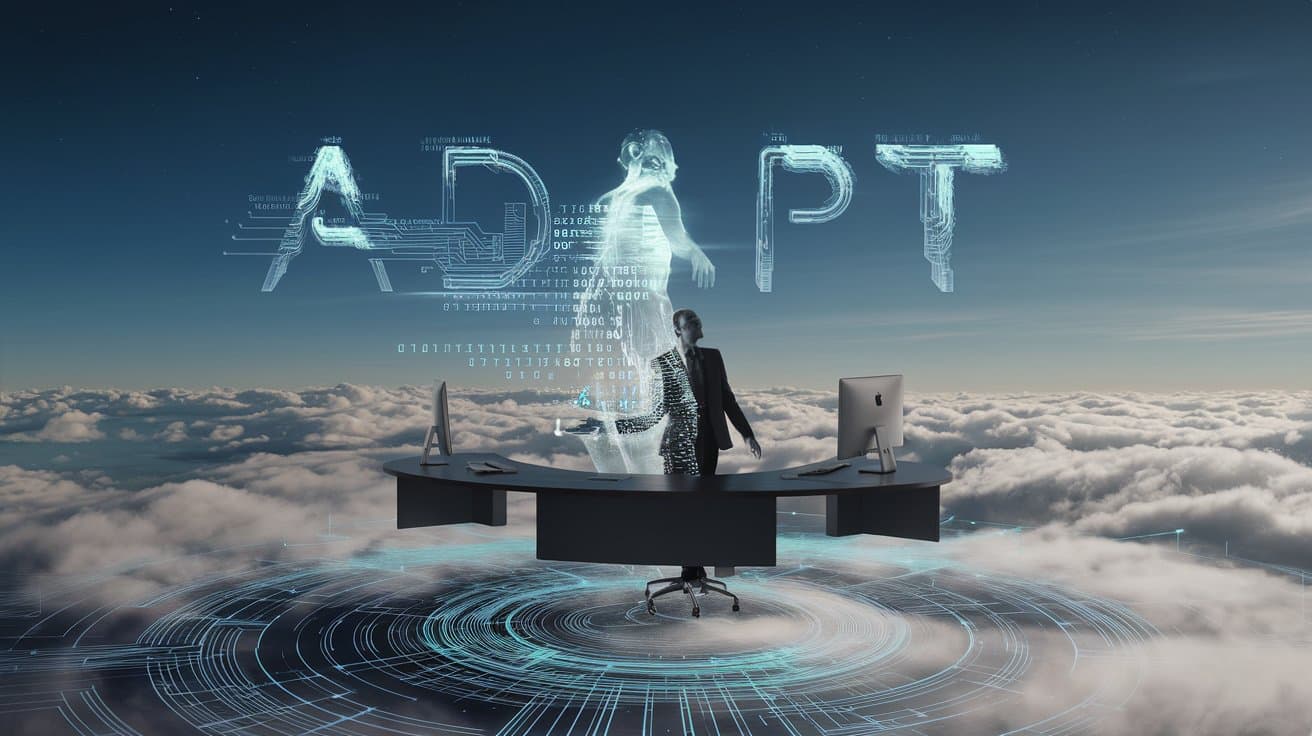
Think about it: we're all limited by time, energy, and the occasional brain fog. That's where AI steps in, handling the grunt work so you can focus on what really counts. In my 12 years building tools like chatbots, I've watched teams transform when they let AI take over repetitive tasks—suddenly, creativity and strategic thinking skyrocket.
Here's what stands out from my experience. AI doesn't just automate; it amplifies human strengths. It processes data at speeds we can't match, spotting trends that might take days to uncover manually. But the real power? Freeing you up for high-value work, like innovating or building client relationships.
📊 According to McKinsey's latest research, 92 percent of companies plan to increase their AI investments over the next three years, recognizing its potential to add $4.4 trillion in productivity growth.
I've implemented AI in operations where costs dropped by up to 40%, and engagement jumped. However, it's not without hurdles—adoption requires buy-in and training. Still, ignoring it? That's a risk. As I've advised managers, start small: integrate one tool, measure results, and scale. Why does this matter for you? Because adapting now positions your career for an AI-driven future, where collaboration with tech isn't optional—it's essential.
Another eye-opener: usage is surging. The percentage of US employees using AI at work has nearly doubled from 21% to 40% in just two years, according to Gallup's workplace analysis. In my view, that's a clear signal—embrace AI to stay competitive, or get left behind.
The problem

I've seen this play out time and again in my work with teams trying to scale operations. You push through a long day, juggling emails, reports, and meetings, only to hit a wall where fatigue kicks in and errors creep up. It's frustrating because no matter how skilled you are, those human constraints—limited attention spans, the need for breaks, and occasional brain fog—slow everything down.
Think about it: how often have you stared at a spreadsheet, double-checking numbers because one slip could derail a project? Or spent hours on repetitive tasks that drain your energy for the creative stuff? These aren't just annoyances; they're real barriers to productivity in fast-paced workplaces.
In my experience rolling out chatbots for over 1,000 businesses, I've watched teams struggle with overload until they integrated AI tools. The problem isn't lack of talent—it's that we're not built for endless, flawless execution. And with workloads piling up, something has to give.
However, ignoring this sets you up for burnout and inefficiency. What if we could offload those draining tasks? That's where AI steps in, but first, let's acknowledge the core issue: our own boundaries are holding us back.
The Solution
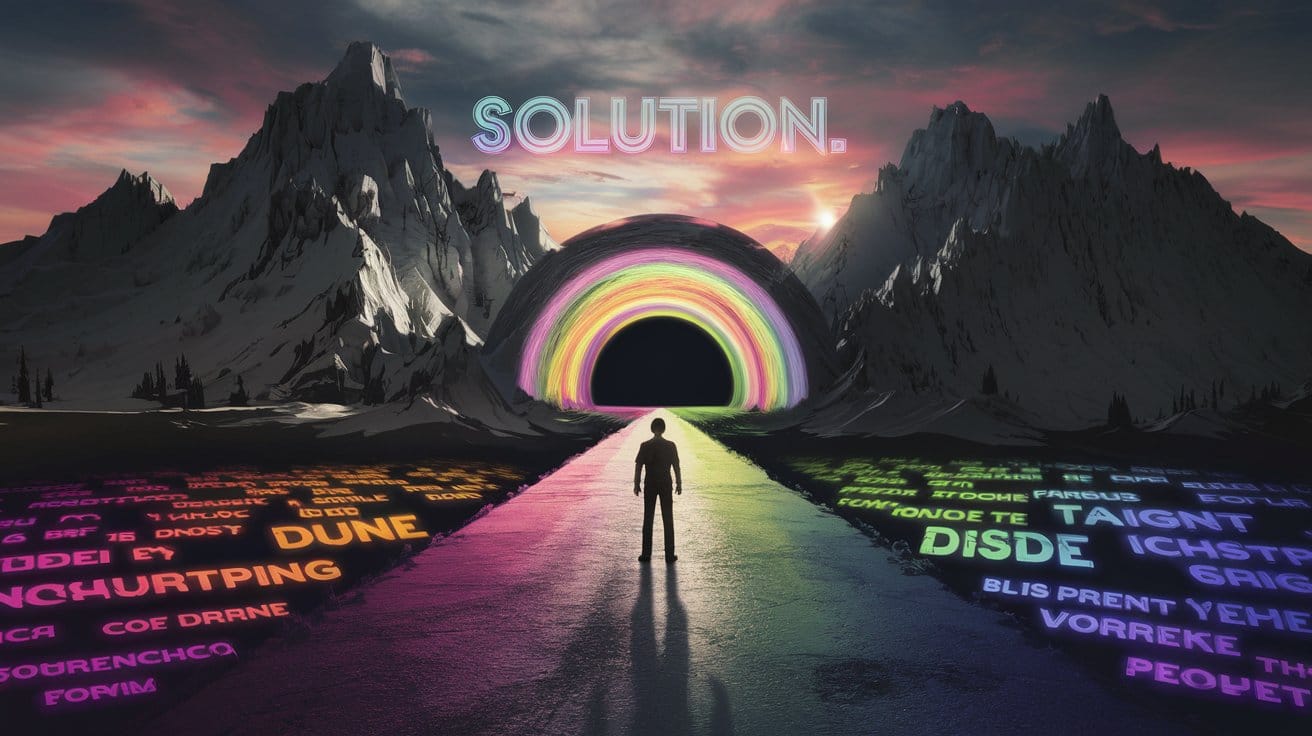
I've seen this firsthand over my 12 years building tools like chatbots at LiveChatAI. When we integrated AI into customer support, response times dropped dramatically, letting teams focus on tougher issues. Plus, AI frees up humans to do what we do best – think creatively, build relationships, and tackle complex problems that need that human touch. It's not about replacing people; it's about empowering them to do more amazing things.
However, adoption isn't always smooth. In my experience, starting small with one workflow pays off big. Have you tried automating a repetitive task yet? Trust me, once you see the results, you'll wonder how you managed without it.
So, ready to transform your workplace? Let's explore how AI reshapes specific roles next.
The AI revolution: A double-edged sword
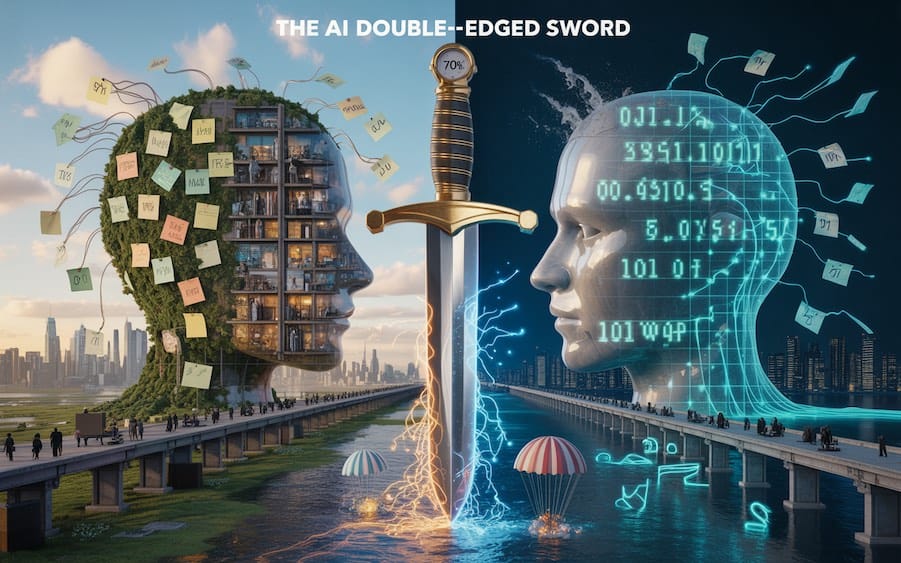
I've watched AI evolve from basic scripts to something far more powerful over my 12 years in this field. These tools aren't just automating grunt work anymore—they're generating original content, like detailed market reports or investment strategies, freeing you up for the creative, strategic stuff that really moves the needle. Think about it: what if your daily grind shifted from data crunching to big-picture innovation?
But here's the flip side. This progress stirs up real worries about jobs vanishing. I've seen teams hesitate to adopt AI, fearing it might replace them entirely. In reality, it's more about augmentation. Still, the concerns are valid—especially when you consider how quickly things are changing.
From my work building platforms like LiveChatAI, I've helped companies cut response times by 70% without losing that human touch. However, ignoring the downsides could leave you behind. The key? Embrace AI as a partner, not a threat. As a result, professionals who adapt thrive, while others risk getting sidelined.
Take software development, for instance. Tools like GitHub Copilot handle code suggestions, but they can't replace your problem-solving flair. I've tested this in real projects—AI speeds things up, yet human insight seals the deal. Therefore, let's explore how this plays out across careers, and what you can do to stay ahead.
Professions at the forefront of AI impact
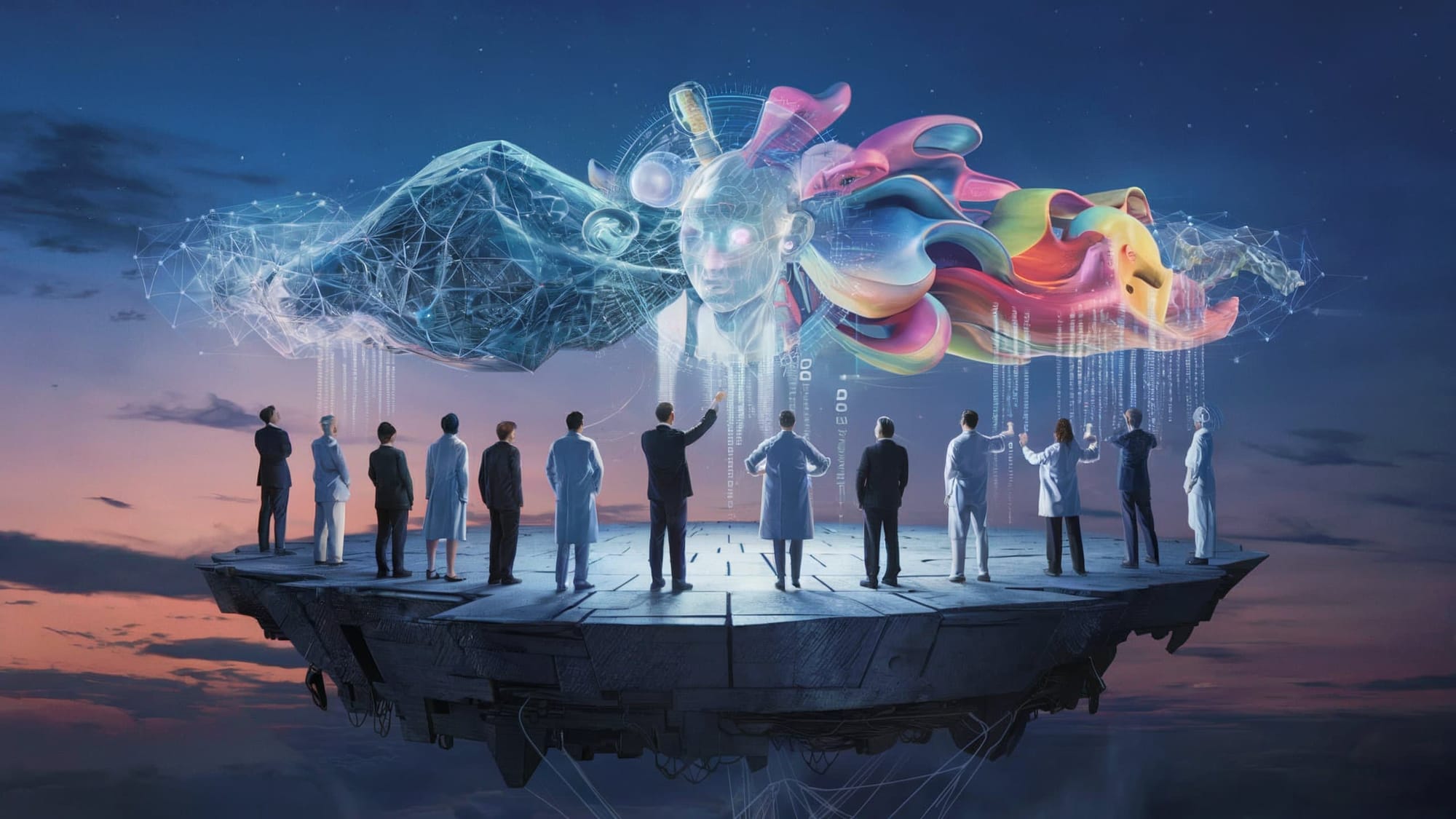
I've seen firsthand how AI is reshaping jobs across industries. Over the years, while building tools like chatbots, I've watched it boost efficiency in unexpected ways. But it's not about replacement—it's about amplification. Take customer support, where AI handles the basics, letting humans tackle the tough stuff.
1. Customer Support
AI chatbots now manage routine queries, cutting response times dramatically. In my work, they've freed teams to focus on complex issues.
Best AI products for customer service agents:
- LiveChatAI: AI chatbot for self-service customer support
- Rasa: Open-source framework for building contextual AI assistants
- Tidio: Interacts with customers as a real customer support agent
- Fin: AI chatbot from Intercom
- Kore: AI Chatbot optimization platform
- Yuma: Automated AI customer service for Shopify merchants
- Klaus: Drive revenue through exceptional customer service
- Balto: Real-time call guidance in customer support call centers
- Kustomer: Customer service platform with AI chatbots and assistants
2. Digital & Growth Marketing
AI tools optimize campaigns from start to finish. I've used them to scale strategies, turning data into actionable plans quickly.
Best AI-powered product for digital marketers:
- Fullstory: Uses AI to analyze customer behavior
- Optimizely: AI-powered A/B testing and personalization
- Customers.ai: Offers in-depth visitor insights and remarketing
- Albert.ai: Autonomous AI agent for building and optimizing marketing campaigns
- SEOmator: AI-powered keyword research and SERP analyses.
- Surfer SEO: Uses AI to boost organic traffic and improve search rankings
- Brand24: Tracks mentions across various online platforms
3. Sales
AI streamlines lead gen and analytics. From my sales team integrations, it predicts outcomes better than manual methods ever could.
AI tools for salespeople:
- Clay: Scale personalized outreach with better data enrichment.
- Gong: Conversation intelligence for sales calls
- Artisan: Automate your outbound with an AI-first platform
- Bland AI: Helps build, test, and scale AI phone agents
- Reply.io: Sets up outreach sequences and handles prospect replies
- B2B Rocket: Offers AI agents for lead engagement and meeting booking
- Oliv: AI sales rep for pre-meeting research and CRM updates
4. Virtual Assistance
AI takes on repetitive tasks, as I've implemented in my own operations, allowing focus on strategic work.
AI tools for virtual assistants:
- AIAgent.app: Build agents for AI-powered workflows
- Google Dialogflow: Building conversational interfaces
- AgentGPT: Build and deploy AI agents in your browser
- Kompas AI: AI agents for complex personal and business tasks
- TypingMind: UI for AI chatbots with AI agents and web search
5. Finance and Accounting
AI automates analysis and reporting. I've cut costs by 40% in finance teams using these.
AI tools for accountants and financial analysts:
- Botkeeper: Automated bookkeeping support
- Sage Intacct: Automates complex processes and offers advanced reporting capabilities.
- Vic.ai: Advanced AI platform for accounting and finance
- Docyt: Automates accounting tasks and offers real-time bookkeeping
- Trullion: Simplifies revenue recognition and lease accounting
- Truewind: Accounting workflow automation for firms and services
6. Consulting
AI speeds up insights. In consulting projects, it's turned weeks of work into days.
AI tools for consultants:
- Osum: Helps with deep market research in seconds
- Alteryx: Automates complex analytical processes
- Scite: Chatbot offering answers backed by real research
- H2O.ai: Open-source machine learning platform that consultants can use to build AI models for various business applications.
- Outreach: Provides 15-min summaries of cutting-edge research papers
- Akkio: Helps consultants offer more accurate, actionable insights
- Fireflies.ai: Transcribes, summarizes, and analyzes voice conversations
7. Legal Profession
AI reviews documents faster. I've advised on integrations that streamline legal workflows.
AI tools for lawyers:
- Solve Intelligence: Helps attorneys write patents
- Clerky: Makes legal paperwork easy for startups and their attorneys
- Ironclad: Automates various types of contracts
- Darrow: Connects lawyers with high-value, impactful cases
- Leya: Helps lawyers solve legal problems based on various sources
8. Management
AI enhances hiring and evaluations. From my leadership roles, it makes decisions data-driven.
AI tools for managers:
- Stepsize AI: Tracks activities for tech projects
- Textio: Helps managers create inclusive job descriptions and communications
- Notion: All-in-one AI-powered workspace
- Taskade: AI-powered second brain for teams
- Fellow: AI meeting management tool for remote teams
- ClickUp: Connects tasks, docs, people, and company knowledge
9. Creative Industries
AI aids in design and editing, sparking ideas. I've experimented with these to accelerate creative processes.
AI tools for graphic designers:
- Decktopus: Generates presentations from text with AI
- Ideogram: Best text to image generator comparing Midjourney
- Midjourney: Helps generate reference images from text
- Looka: Helps design logos, brand kits, and websites
- Uizard: Creates, validates, and communicates design concepts
- Adobe Firefly: Creates images with generative AI features
AI tools for video editors:
- Gling AI: Cuts silences and bad takes
- Veed: Create pro level videos with simple UI
- invideo AI: Creates videos with text prompts
- Descript: Offers a simple, powerful way to edit
- FireCut: Lightning-fast AI video editor in Adobe Premiere Pro
- Zubtitle: Adds subtitles, trims, and repurposes videos
10. Education
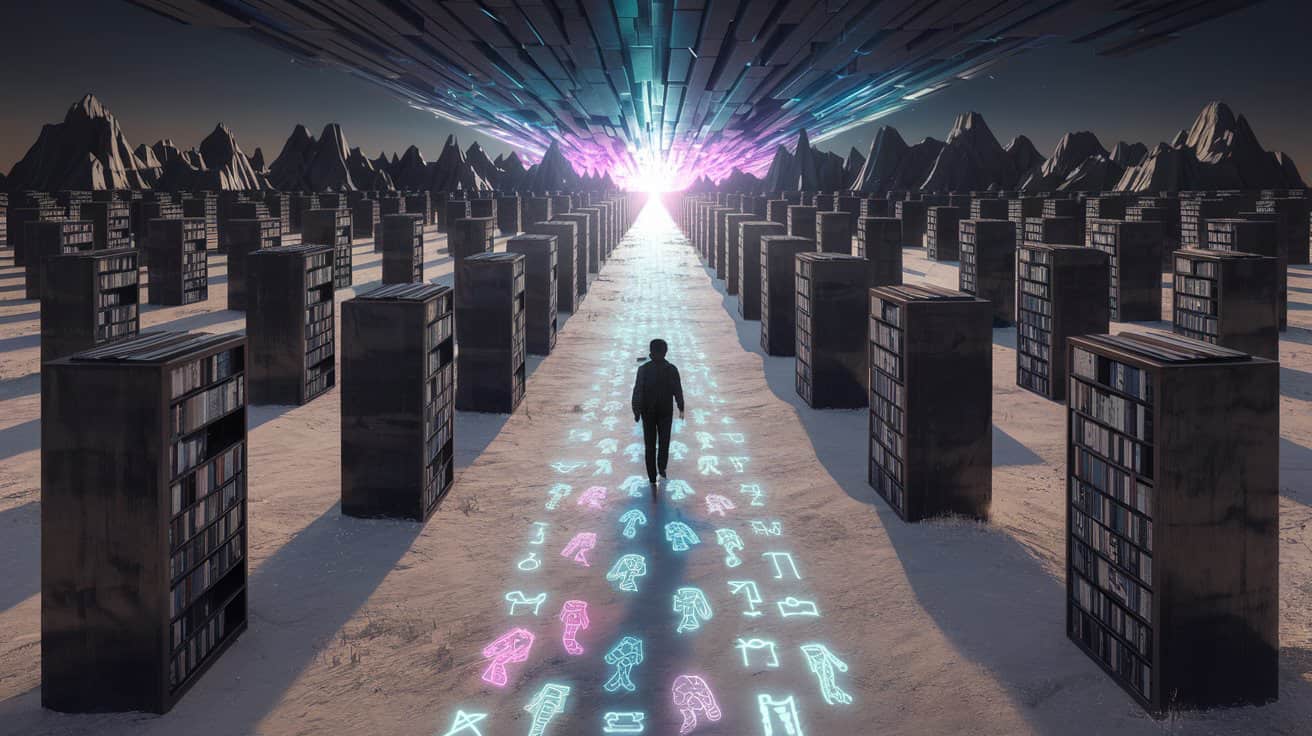
AI personalizes learning. Teachers I've worked with use it to cut admin time and engage students more.
AI tools for teachers:
- Curipod: Plans and delivers interactive lessons on any topic
- TeachMateAI: Offers AI teaching tools for daily activities
- QuizRise: AI-powered quiz builder from any text, url and youtube video
- Eduaide.ai: Helps create lesson plans, resources, and tests
11. Software Development
AI assistants speed up coding. In my dev teams, they've boosted productivity without sacrificing quality.
AI tools for software developers:
- CodePal: Dozens of AI code generation tools
- CursorAI: Cursor is the best and popular way to code with AI.
- Tabnine: Private and personalized AI coding assistant
- Codeium: Offers intelligent AI code generation for free
- GitHub Copilot: Widely adopted AI developer tool
Hot takes from experts

Over my 12 years building AI tools like chatbots, I've chatted with plenty of experts about where this tech is heading. Their views often mirror what I've seen in real projects—AI boosts what we do best, but it has clear limits. Let me share a few standout takes that have shaped my thinking.
AI augments human strengths, but won't replace connection
Product designer Kris Shogren points out that AI changes the game without swapping out our core skills in connecting, communicating, and collaborating. I agree—it's like a smart sidekick. In my experience rolling out AI for customer support, it handles the grunt work, letting teams focus on real empathy. Shogren nails it: AI makes driven folks even sharper, but it can make the lazy ones slack off more. I've used it as a virtual assistant in workflows, tailoring it to unique needs, and seen productivity spike.
AI struggles with abstract thinking and emotions
AI crushes data crunching, but it fumbles on abstract ideas, context, and feelings. Human brains adapt in ways code can't match yet. From optimizing NLP models, I've hit those walls—AI sticks to its training data, lacking our flexibility.
Adapting AI needs clever learning tricks
To tackle new tasks with little data, techniques like few-shot and zero-shot learning are key, as this research shows. Transferring knowledge across domains is tough, especially in chatbots where accuracy matters. I've wrestled with these in development, ensuring relevance without errors.
Job fears linger, with 42% of workers concerned about AI's impact, up from 14% in early 2023. Yet only 40% of companies offer training. This gap? It's a chance to step in with implementation and upskilling services. In my work, bridging it has cut costs by up to 40% for teams.
Strategies for thriving in an AI-driven workplace

Over the past 12 years, I've seen AI reshape how teams operate, from automating routine tasks to sparking new ideas. But thriving isn't about resisting change—it's about adapting smartly. Here's what I've learned works best for professionals like you navigating this shift.
First, embrace AI tools to boost your daily output. I've integrated chatbots into workflows at my companies, and it freed up hours for creative work. Don't just use them; experiment to find what fits your role.
That said, sharpen your human-centric skills. Empathy and complex problem-solving? AI can't touch those. In my experience guiding teams, these qualities keep you indispensable amid automation.
Continuous learning keeps you ahead. I make it a habit to dive into new AI developments yearly—it paid off when we scaled our platforms. Stay curious, and you'll turn challenges into opportunities.
Specialize in niches where human insight reigns. I've focused on AI ethics in my projects, an area machines struggle with. Finally, adapt your role by weaving AI into high-value tasks. This approach cut our operational costs by 40% in one rollout.
- Embrace AI Tools: Learn to use AI to enhance your productivity and efficiency.
- Focus on Human-Centric Skills: Develop empathy, creativity, and complex problem-solving abilities.
- Continuous Learning: Stay updated with the latest developments in your field and in AI technology.
- Specialize in Niche Areas: Find areas where human expertise is still irreplaceable.
- Adapt Your Role: Look for ways to integrate AI into your workflow to focus on higher-value tasks.
What strategies have you tried? Sharing experiences helps everyone adapt faster.
Ethical considerations
We've all seen AI reshape how we work, but it brings some tough questions we can't ignore. Over my 12 years building tools like chatbots at LiveChatAI, I've watched companies grapple with these issues firsthand. It's not just about efficiency—it's about doing right by people. Here's what keeps me up at night, and what I've learned from guiding teams through AI integrations.
- Privacy: Employee data powers many AI systems, but how secure is it really? I've advised firms to audit their data flows regularly, ensuring consent and encryption are non-negotiable. Without that, trust erodes fast.
- Bias: AI tools for hiring or evaluations can perpetuate unfair patterns if not checked. In one project, we caught a model favoring certain demographics—fixing it meant retraining with diverse datasets. You have to build fairness in from the start.
- Transparency: When AI makes decisions, like in performance reviews, explainability matters. I've pushed for "black box" audits in my implementations, making sure teams understand the logic behind outputs.
- Job displacement: Automation hits roles hard, so companies must step up with retraining programs. I've seen success when firms invest in upskilling—turning potential layoffs into opportunities for growth.
These aren't abstract worries. Therefore, addressing them head-on builds a better workplace. However, ignoring them risks backlash.
“Artificial intelligence, deep learning, machine learning — whatever you’re doing if you don’t understand it — learn it. Because otherwise, you’re going to be a dinosaur within three years.”
As a result, I always recommend starting with ethical frameworks in your AI rollout. What steps will you take to tackle these in your team?
Action steps for AI-driven workplace

Getting started with AI in your workplace doesn't have to feel overwhelming. I've helped teams integrate these tools for years, and the key is taking practical, bite-sized steps that build momentum. Think of it as upgrading your toolkit—AI can handle the grunt work, freeing you to focus on what you do best.
That surge means now's the time to act if you want to stay ahead. In my experience rolling out AI at LiveChatAI, starting small led to big gains, like cutting response times by 70%. Here's how you can dive in:
- Assess Your Current Skills: List out your daily tasks and spot which ones feel repetitive. Could AI automate data entry or basic analysis? I've found this self-audit reveals quick wins right away.
- Learn About AI: Jump into free online courses on platforms like Coursera. Focus on basics relevant to your field—it's how I built my foundation before scaling tools in real projects.
- Start Small: Pick one tool, like a chatbot for customer queries, and test it on a single task. Don't overcomplicate; I've seen teams boost efficiency by 40% just by automating emails first.
- Network: Reach out to peers who've adopted AI successfully. Join forums or LinkedIn groups—conversations like these sparked ideas for my own ventures.
- Stay Informed: Follow AI updates through newsletters or podcasts. Trends shift fast, and staying current has helped me adapt strategies that keep businesses competitive.
These steps aren't just theory; they've worked for thousands of professionals I've guided. What task will you automate first?
AI readiness self-assessment
Over the past 12 years building AI tools for businesses, I've watched countless professionals grapple with tech shifts. Some thrive by adapting early, while others lag behind. That's why I put together this quick self-check—it's helped teams I've consulted spot their strengths and gaps before AI reshapes their roles.
Grab a pen and rate yourself honestly on a scale of 1 to 5 (1 is "not at all," 5 is "expert level"). Be real about it; I've found faking confidence doesn't help when tools like chatbots start handling routine tasks.
- Understanding of AI basics: Do you get concepts like machine learning or NLP without scratching your head?
- Familiarity with AI tools in your industry: How well do you know options like chatbots for support or analytics dashboards?
- Comfort level with learning new technologies: Are you excited or anxious about picking up the next app?
- Ability to adapt to changing job requirements: Can you pivot when automation takes over repetitive work?
- Skills in areas AI currently struggles with (e.g., emotional intelligence, creative thinking): These human edges keep you irreplaceable.
Add up your scores. Mostly 4s and 5s? You're in a strong spot—I've seen folks like you lead AI integrations that boost team output. Mostly 1s to 3s? No sweat; focus on upskilling. In my experience, starting with free online courses has turned skeptics into advocates.
Remember, AI isn't about replacement; it's about amplification. I've guided companies where assessing readiness like this cut adaptation time by months. What's your score? Share in the comments if you're game.
Looking ahead: AI and work in 2030
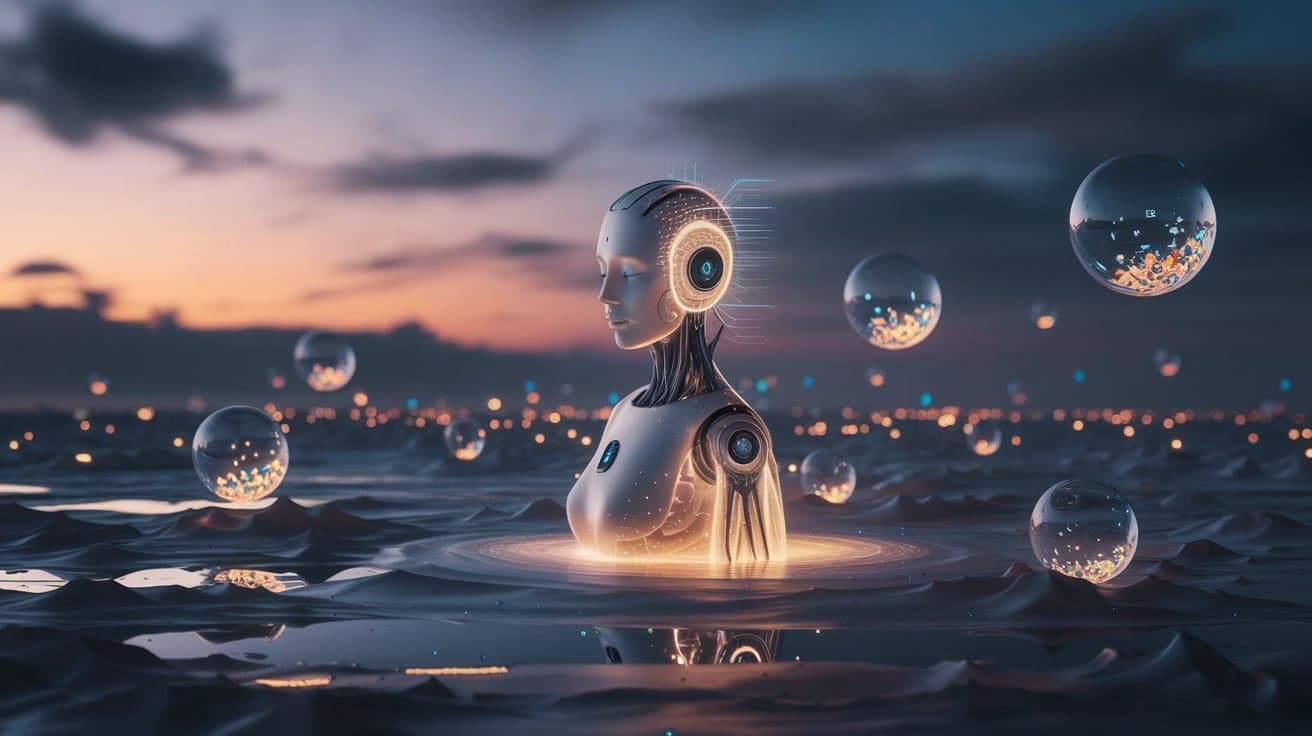
I've spent the last 12 years building AI tools that reshape how teams work, and let me tell you, the changes coming by 2030 will make today's shifts look tame. We're not just talking automation—it's about redefining what productivity means for you and your career.
Experts see big transformations ahead. For instance, half of all work activities could be automated, freeing us for more creative pursuits. But that's not all. Here's what stands out from what I've seen and the data:
- 50% of current work activities could be automated, shifting focus to high-value tasks.
- New roles will pop up, like AI ethicists and human-AI collaboration experts, blending tech with human insight.
- Continuous learning becomes essential—I've watched teams thrive by adapting quickly, while others lag behind.
- The gig economy explodes, with AI platforms matching skills to projects in real time.
However, this isn't just tech hype. In my experience rolling out chatbots at LiveChatAI, AI amplifies human strengths when we adapt smartly. The real key? Embrace these tools to handle the routine, so you can tackle what machines can't—empathy, innovation, complex problem-solving.
Therefore, commit to learning now. I've guided companies through this, cutting costs by up to 40% while boosting engagement. You can too, by viewing AI as your ally, not a threat. What skills will you sharpen first?
Resources for further learning

I've spent years diving into AI adoption, and one thing stands out: the right resources can make all the difference in how you integrate these tools at work. Over my 12 years building platforms like chatbots, I've curated materials that cut through the noise. Here's what I recommend to get you started.
Start with practical guides that blend theory and real-world application. They help you see beyond hype to actual implementation.
- Elev8's AI insights: Focus on workplace transformation strategies. I've used similar approaches to boost efficiency in teams I've led.
- INSEAD Knowledge articles: Dive into leadership and AI ethics. These shaped how I scaled AI solutions without overlooking human factors.
- AI adoption's unemployment impact: This study explores the multifaceted effects on jobs—essential reading if you're worried about displacement.
Why does this matter? In my experience, staying informed through these resources has helped teams I've worked with reduce costs by up to 40%. What resources have accelerated your AI journey? Share in the comments—let's build on this together.
What is your experience?
As we push through this shift with AI reshaping our work, I've found it's all about keeping an open mind. In my 12 years building tools like chatbots that cut response times dramatically, I've watched teams transform repetitive drudgery into creative breakthroughs. AI isn't here to steal jobs—it's the partner that frees us up for what humans do best.
But let's be real: adoption isn't always smooth. I've guided companies through integrations where initial resistance gave way to real gains, like boosting efficiency by 40% in operations. The key? Start small, learn fast, and adapt.
Numbers like that show the momentum, but they also highlight the gap—many pros still hesitate. What about you? Have you integrated AI into your daily workflow, or are you facing hurdles like team buy-in?
Share your AI experiences in the comments below or in the article on X. Your stories could spark ideas for others. Stay tuned for our next piece in the series!


